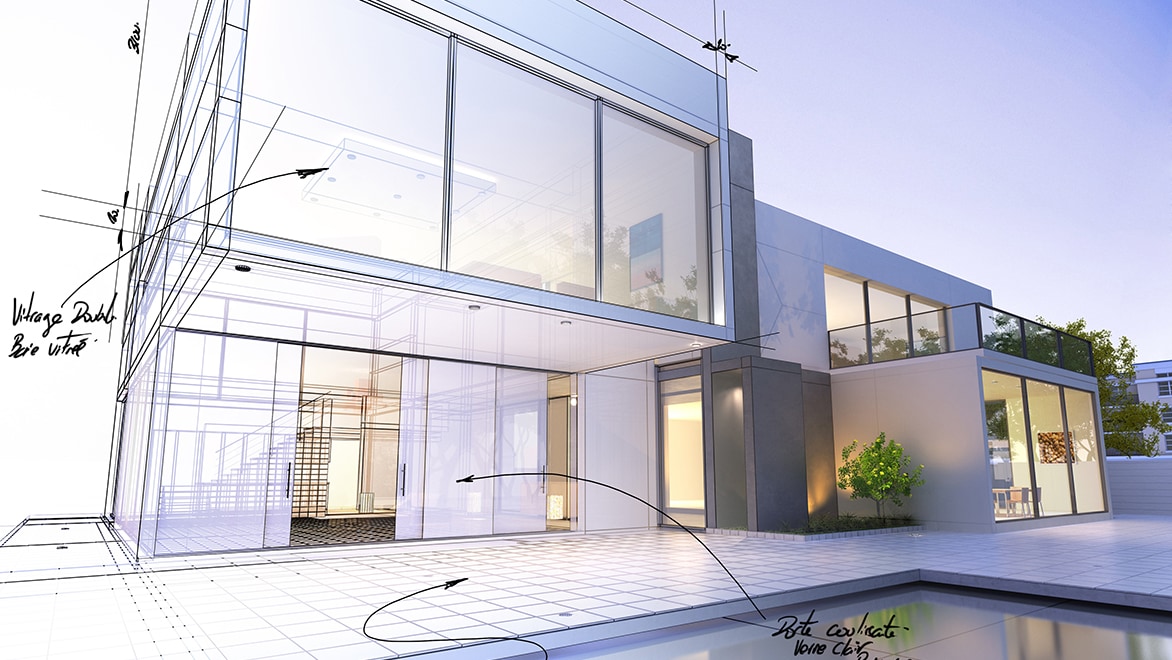Recognizing the Collaborative Refine Between Architects and Designers in Modern Building And Construction Projects
The collective process between engineers and engineers is necessary in modern construction projects, as it integrates layout intent with design feasibility. Exploring these characteristics reveals insights that could considerably affect project outcomes and general industry requirements.
The Importance of Cooperation
The joint synergy between designers and designers is crucial for the effective understanding of any kind of building job. This collaboration brings together distinct competence and viewpoints, enabling the combination of cutting-edge style with sensible engineering solutions. By collaborating, designers and designers can make sure that a job not only meets aesthetic and functional requirements yet likewise adheres to safety and security, sustainability, and monetary restrictions.
Partnership cultivates a shared vision, assisting in the alignment of objectives and assumptions from the outset. This alignment is vital in addressing possible challenges and mitigating dangers that can arise during the project lifecycle. Additionally, a collaborative approach enables for the reliable allocation of sources, enhancing both time and expense.
The relevance of cooperation extends to the iterative procedure of style and building, where responses from engineers can notify architectural choices, leading to more feasible and lasting designs. On the other hand, engineers can motivate designers to assume artistically concerning just how to achieve architectural stability without compromising artistic intent. Ultimately, the collaborative relationship between engineers and designers is not merely advantageous; it is basic to the development of top notch, functional, and ingenious built atmospheres that fulfill the requirements of society.
Interaction Techniques and Devices
Effective interaction strategies and devices are essential for cultivating partnership between engineers and engineers throughout the task lifecycle. Establishing clear channels of interaction is vital to make sure that all team participants are lined up with project objectives, timelines, and duties. Regular meetings, both in-person and online, offer opportunities for stakeholders to review progress, address issues, and make notified decisions.
Making use of task management software program, such as BIM (Building Information Modeling) systems, boosts partnership by making it possible for real-time sharing of style modifications and technical requirements. These tools help with openness, allowing designers and designers to envision changes and evaluate their effect on the general project.

Shared Objectives and Project Vision

Establishing common objectives includes open dialogue and a detailed understanding of each discipline's contributions. Designers typically concentrate on style intent, spatial partnerships, and individual experience, while designers stress architectural integrity, systems performance, and conformity with regulations (cda architects). When these perspectives are aligned, the result is a cohesive job that sticks to both creative aspirations and technological expediency
In addition, a try this website well-defined task vision promotes accountability amongst staff member, encouraging each individual to take possession of their role in achieving the preferred result. Routine check-ins and collective workshops can even more enhance this commitment, permitting modifications to be made as the job evolves. Eventually, a common vision not only boosts teamwork however likewise elevates the high quality of the last deliverable, causing effective project conclusion.
The Duty of Technology
Leveraging innovation has actually become vital in improving cooperation in between designers and designers. Structure Information Modeling (BIM) stands out as a critical innovation, Bonuses permitting both engineers and designers to create detailed 3D designs that envelop design intent and structural stability.
Furthermore, cloud-based systems enable seamless collaboration, enabling job stakeholders to accessibility and upgrade task data from anywhere. This fosters a culture of openness and accountability, as changes can be tracked and reviewed in real-time. Additionally, mobile applications more improve communication, giving on-site groups with instant accessibility to project specifications and updates.
Emerging technologies such as expert system and machine knowing are likewise starting to contribute in anticipating evaluation, assisting teams determine potential issues prior to they emerge. Inevitably, the function of modern technology in architecture-engineering cooperation not only boosts workflow efficiencies yet also improves development, leading to even more successful job outcomes. By welcoming these technological developments, architects and designers can make sure a much more natural and productive collaborative procedure throughout the building lifecycle.
Instance Research Studies in Effective Partnerships
Countless study show the profound effect of efficient collaborations in between designers and engineers on task outcomes. One significant example is the collaboration on the High Line Home Page in New York City City, where landscape engineers, designers, and city planners interacted to change an abandoned rail line into a lively public park. This multidisciplinary approach not just boosted the aesthetic top quality however additionally ensured architectural safety and ecological sustainability.
Another excellent case is the style and building and construction of the Sydney Music Hall. The collaboration in between designer JÃ ¸ rn Utzon and architectural designer Ove Arup exhibited ingenious problem-solving. Their cooperation permitted the iconic shell-like layout while resolving intricate design difficulties, inevitably resulting in a timeless building masterpiece.
The Burj Khalifa in Dubai better shows the importance of collective efforts. cda architects. The integration of design and design proficiency enabled the project team to attain extraordinary elevations while sticking to safety guidelines and visual vision
These instances underscore the relevance of communication, depend on, and shared objectives. In today's complicated construction setting, such collaborations are important to browsing challenges and providing tasks that fulfill both functional and visionary goals.
Final Thought
In conclusion, the collaboration in between designers and designers is vital for the success of modern building and construction jobs. Reliable communication strategies, a shared task vision, and the integration of innovative innovations are important parts that facilitate this collaboration.